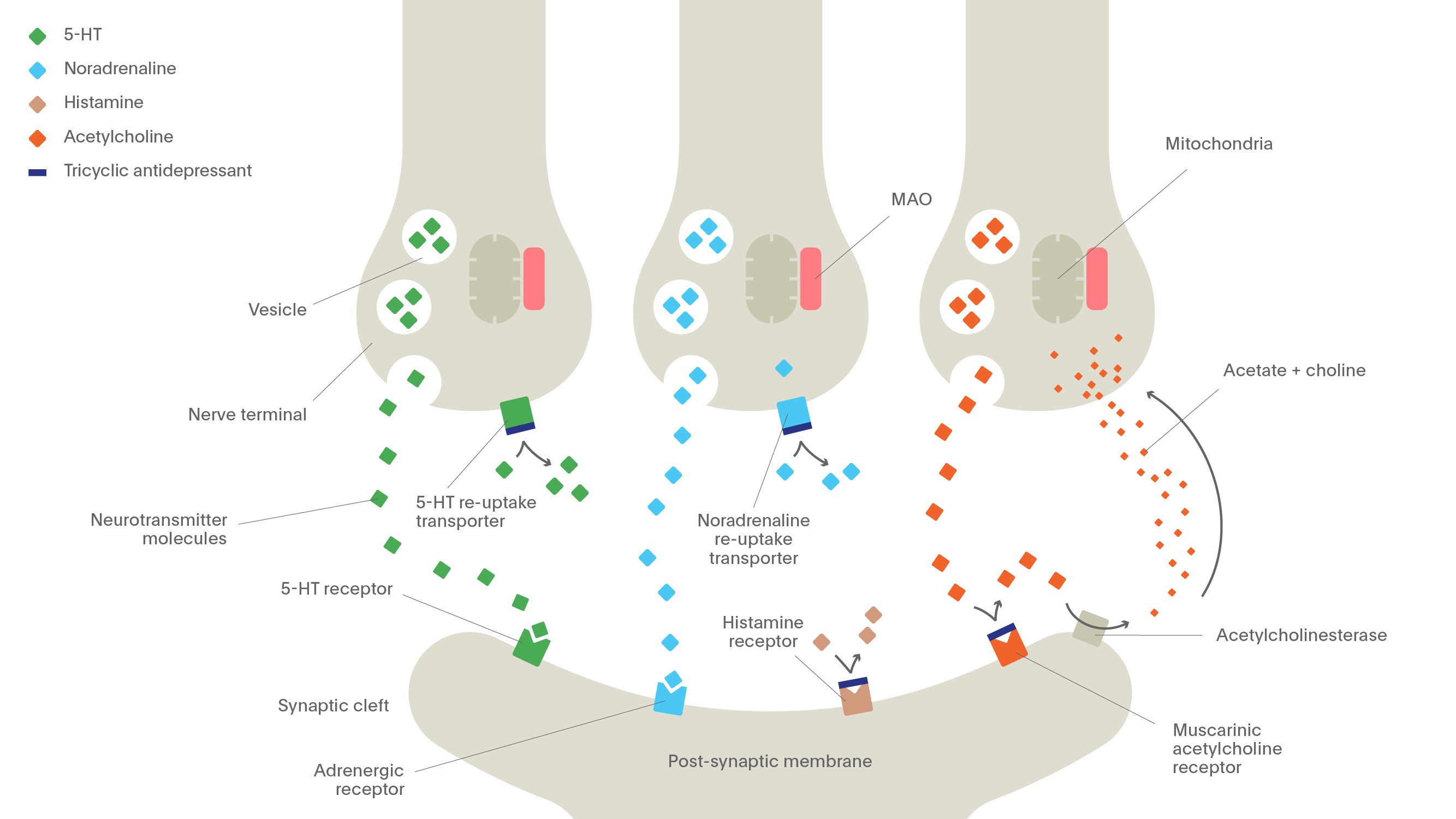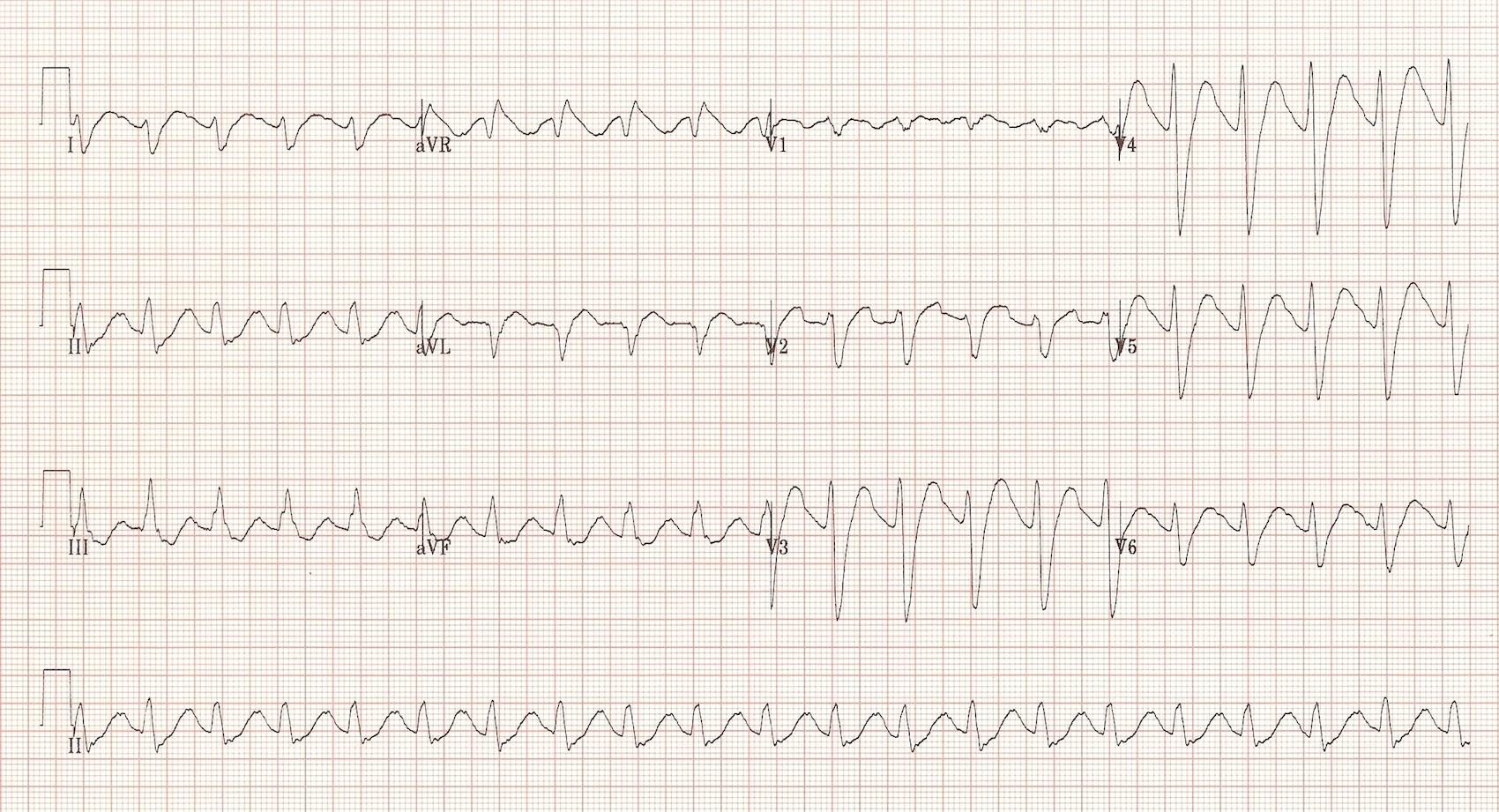Antidepressants
Introduction
Antidepressants are a class of drugs that are commonly used to treat various psychiatric disorders or presentations such as major depressive disorder, anxiety disorders, eating disorders and even chronic pain, neuropathic pain among many more.
The mechanism of action of these medications are many and complex:
We will review some of the common antidepressants in this article including: Selective Serotonin Reuptake Inhibitors (SSRI), Selective Norepinephrin Reuptake Inhibitors (SNRI), Tricyclic Antidepressants (TCA), Monoamine Oxidase Inhibitors (MAOI).
Selective Serotonin Reuptake Inhibitors
Common Medications:
- fluoxetine, paroxetine, sertraline, citalopram
Remember these by:
Flashbacks paralyze senior citizens. (fluoxetine, paroxetine, sertraline, citalopram)
Mechanism of Action:
-
5-HT–specific reuptake inhibitors
Clinical Uses
-
Depression
-
Generalized anxiety disorder and panic disorders
-
Obssessive Compulsive Disorder.
Side Effects
-
GI distress
-
Sexual dysfunction (anorgasmia and decreased libido)
-
Serotonin syndrome with any drug that increases 5-HT (e.g., MAO inhibitors, SNRIs, TCAs)
-
Patient presents with hyperthermia, confusion, myoclonus, cardiovascular collapse, flushing, diarrhea, seizures.
-
Treatment: cyproheptadine (5-HT receptor antagonist).
-
Selective Norepinephrine Reuptake Inhibitors
Common Mediations:
- Venlafaxine, duloxetine
Mechanism of Action:
- Inhibit 5-HT and norepinephrine reuptake
Clinical Use:
- Major Depression.
- Venlafaxine is also commonly used for generalized anxiety and panic disorders
- Duloxetine is also commonly used for diabetic neuropathy.
Side Effects
- can increase blood pressure
- GI upset: nausea
Tricyclic antidepressants
Common Mediations:
-
Amitriptyline, nortriptyline, imipramine, desipramine, clomipramine, doxepin, amoxapine
Remember:
Most TCAs end with the suffix -iptyline or -ipramine
Mechanism of Action:
- Inhibit the reuptake of norepinephrine and 5-HT.
Clinical Use:
- Major Depression
- Fibromyalgia.
- Clomipramine can also be used of Obsessive Compulsive Disorder
Side Effects
-
Sedation, α1 -blocking effects including postural hypotension, and atropine-like (anticholinergic) side effects (tachycardia, urinary retention, dry mouth). 3° TCAs (amitriptyline) have more anticholinergic effects than 2° TCAs (nortriptyline) have. Desipramine is less sedating, but has a higher seizure incidence.
-
Anticholinergic side effects
Remember tCa:
Convulsions, Coma, Cardiotoxicity (arrhythmias), Confusion;
TCA Overdose
In a TCA overdose, patients will initially be drowsy and susequently go into cardiac arrest. The arrest is secondary to a ventricular arrhythmia. Prior to arrrest their EKG may look like this:
Patient's will go into cardiac arrest because of a ventricular arrhythmia. You can recognize the abnormality on and EKG prior to the arrest:
- Interventricular conduction delay:
- QRS > 100 ms
- Findings suggestive of right axis deviation:
- Terminal R wave > 3 mm in aVR
- R/S ratio > 0.7 in aVR
Treatment is with sodium bicarbonate.
Monoamine Oxidase Inhibitors
Common Medications:
- Tranylcypromine, Phenelzine, Selegiline
Mechanism of Action:
-
Nonselective MAO inhibition which will cause an increase levels of amine neurotransmitters (norepinephrine, 5-HT, dopamine),
Clinical Uses
-
Depression
-
Anxiety
Side Effects
-
Hypertensive crisis (most notably with ingestion of tyramine, which is found in many foods such as wine and cheese);
-
Serotonin Syndrome
-
Do not use MAOIs with SSRIs, TCAs, St. John’s wort, meperidine, and dextromethorphan
-





